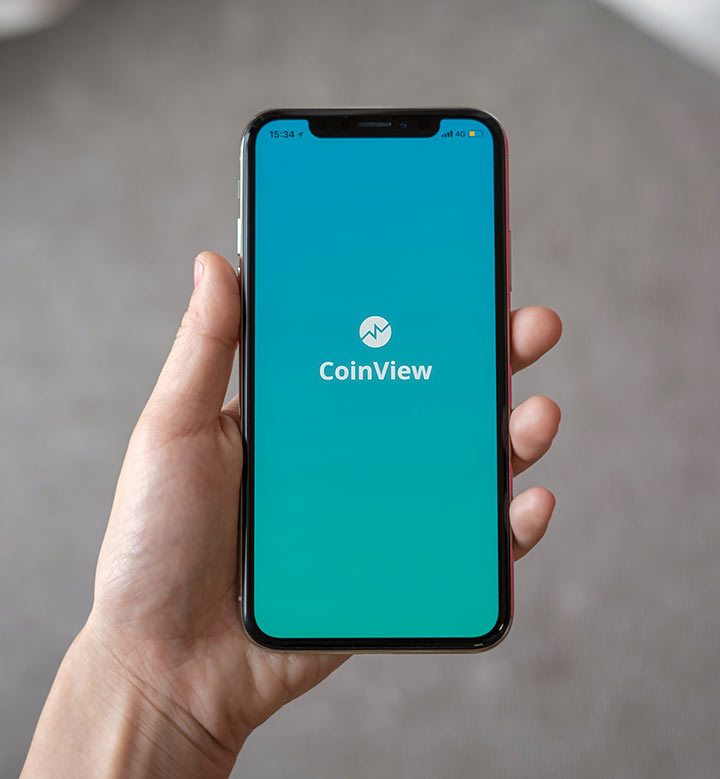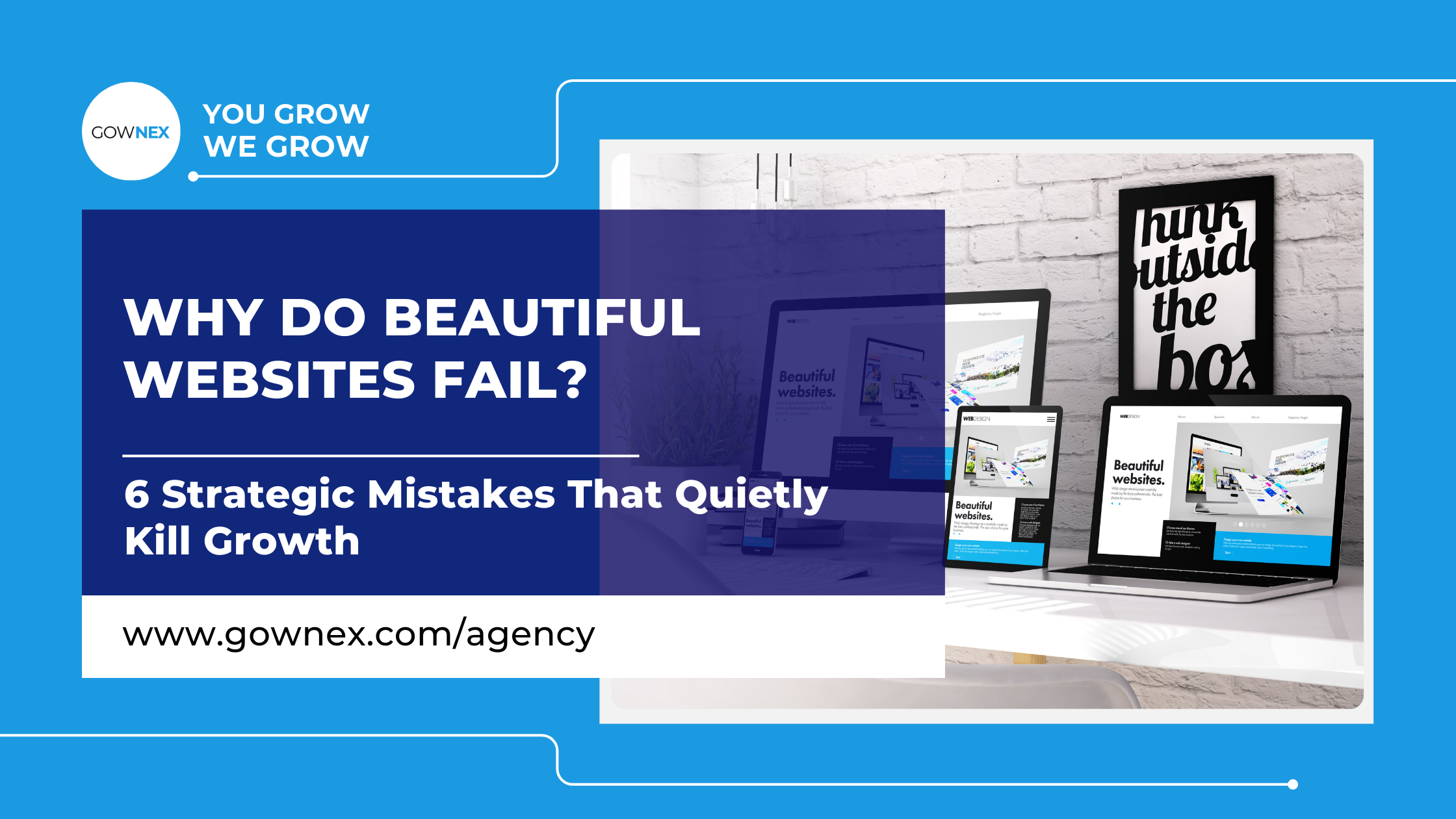Why Do Beautiful Websites Fail? 6 Strategic Mistakes That Quietly Kill Growth
When Beauty Isn’t Enough
Here’s a question for you: If looks were everything, why do so many beautiful websites fail?
It’s like owning a flashy sports car with no engine—it turns heads, but it doesn’t move forward. Many businesses pour time and money into design, yet their websites quietly under-perform. The issue isn’t appearance—it’s the strategic website challenges hiding beneath the surface.
Let’s break down six silent mistakes that cause websites to stall and, more importantly, how to fix them.
1. Poor User Experience (UX): A Fancy Restaurant With Confusing Menus
Imagine walking into a 5-star restaurant where the decor is stunning—but the menu is confusing, the tables are hard to find, and the service is slow. That’s what poor UX feels like online.
Why it matters: Research by Forrester shows that a well-designed UX can raise conversion rates by 200%. Yet, poor navigation or cluttered design drives users away instantly.
Solution:
- Keep navigation simple and intuitive.
- Use visual hierarchy (clear headings, CTAs, white space).
- Test designs with real users before launching.
Poor UX doesn’t just frustrate—it also ties directly into the next challenge: visibility.
2. SEO & Visibility Problems: The Hidden Shop in a Busy Market
Imagine setting up a beautiful shop in the middle of Lagos but forgetting to put up a signboard. That’s what happens when SEO is ignored. No matter how great your site looks, people can’t find it.
Why it matters: 93% of online experiences begin with a search engine, yet 75% of users never scroll past page one (HubSpot). If your site isn’t optimized, you’re invisible.
Solution:
- Optimize titles, meta descriptions, and headings.
- Focus on keyword-rich, helpful content.
- Build quality back-links.
- Monitor performance with tools like Google Search Console.
Of course, being visible is only step one. Once people find you, you need something to keep them there—content.
3. Weak Content Strategy: A Store With Empty Shelves
Ever walked into a store only to find dusty shelves and little to buy? That’s a website without strong content. Content fuels traffic, builds trust, and drives action.
Why it matters: According to Demand Metric, content marketing generates 3x more leads than paid ads—at 62% lower cost. Yet many sites either post inconsistently or create content that doesn’t resonate.
Solution:
- Create a clear content calendar.
- Mix formats: blogs, videos, case studies, infographics.
- Focus on solving real customer problems.
- Update old content to keep it relevant.
But content alone isn’t enough. You need a system to turn visitors into customers.
4. Poor Lead Generation & Conversion Funnels: Leaky Buckets
Think of your website as a bucket. Traffic is water poured in—but if the bucket is full of holes, it leaks before you can use it. Poor lead capture forms, confusing CTAs, and broken funnels cause this problem.
Why it matters: WordStream reports that the average website conversion rate is only 2.35%, but top performers hit 11%+. The gap comes down to optimized funnels.
Solution:
- Place clear CTAs above the fold.
- Use landing pages tailored to campaigns.
- Offer value (free resources, discounts, webinars) for sign-ups.
- Track conversions with analytics tools.
Now, even with a funnel, if your brand feels inconsistent, trust evaporates.
5. Inconsistent Branding: A Band Playing Different Songs
Imagine a music band where each member plays a different tune. That’s how an inconsistent brand feels online. Fonts, colors, tone of voice—if they don’t align, your brand loses credibility.
Why it matters: Consistent branding can increase revenue by up to 23% (Lucidpress). But inconsistency confuses users and weakens recognition.
Solution:
- Create and follow a brand style guide.
- Keep design, tone, and messaging uniform across all pages.
- Use storytelling that aligns with your mission and values.
Strong branding must extend beyond desktop—it needs to carry through to mobile.
6. Mobile Experience Failures: A Shop With Narrow Doors
Imagine a mall where the main entrance is too small for most people to walk through. That’s what happens when your site isn’t mobile-friendly.
Why it matters: Mobile accounts for over 60% of global traffic, yet many sites still break on smaller screens. Google also ranks mobile-first, meaning poor mobile design hurts SEO.
Solution:
- Use responsive design.
- Optimize images and CTAs for touchscreens.
- Test across multiple devices before launch.
Strategy Is the Engine Behind the Beauty
A website can be breathtaking, but without strategy, it’s like a sports car without fuel—pretty, but useless. Strategic website challenges are often invisible at first, but they quietly eat away at growth until businesses wonder why traffic isn’t converting.
If your website looks great but isn’t performing, it’s time for a website strategy audit. Let’s fix the leaks and turn clicks into loyal customers.
Missed our previous post? Check out Top Technical Website Challenges (and How to Fix Them Fast) to make sure your foundation is strong before layering strategy on top. And keep an eye out—we’ll soon share real-life case studies of businesses that overcame these challenges and skyrocketed growth.
Discover more from Gownex Agency
Subscribe to get the latest posts sent to your email.








